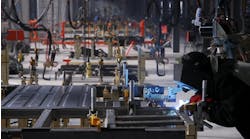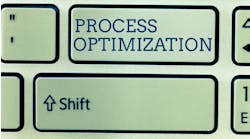Clearing things up with fuzzy digitalization value propositions
Fuzzy value propositions. Ever encountered digitalization projects that have some intriguing qualities but, when it comes to discerning the actual value they offer, the view gets a little fuzzy?
It’s not uncommon.
But Hans-Jürgen Huber has some guidance. Below, see how Endress+Hauser Digital Solutions’ general manager of Industrial Internet of Things suggests clarifying the view when it comes to value props.
Smart Industry: How is your Industry 4.0 vision changing as we mature into digital transformation?
Hans-Jürgen: We see that the digital twin—despite the concept being almost 20 years old—is currently gaining momentum. This relates to the fully digital exchange of data for instrumentation (assets) such as user manuals, calibration certificates, availability of new firmwares, etc. The “Asset Administration Shell” seems to be one of the main standards for this and the newly founded Industrial Digital Twin Association (IDTA)—where Endress+Hauser is a founding member—is now driving these activities to make them applicable for many different verticals.
We also see that the view on predictive maintenance is changing; for a sensor/instrumentation company like Endress+Hauser it is more important to look at the reliability of the whole production process rather than the individual instrument.
Lastly, we see an increasing and real demand for managed services—plant operators increasingly want to focus on their core business and their core competences around producing and selling a certain substance/compound. We can help these customers with providing the specialized expertise needed to manage a fleet of instrumentation assets.
Smart Industry: What is the most pressing challenge you see as we emerge from the pandemic and what new tools are encouraging to overcome these hurdles?
Hans-Jürgen: Remote management is even more important than it used to be. And the new thing is that remote management also includes traditional plants, as operators are restricting the physical access to the plant more and more.
Smart Industry: How do you define fuzzy value propositions in the manufacturing space and why are these problematic? What's the fix?
Hans-Jürgen: One of the often repeated promises of Industry 4.0 was that it is sufficient to gather as much data as possible and then the magic would come. But no one really knew what the magic was (“something with data science” / “big data” / “AI"). This has not materialized because it becomes evident that machines do not provide solutions to maybe even unknown problems just by using some form of algorithm.
The fix is to turn things around: think about the problem you want to solve, then think what data is needed to do this and then define an architecture which is able to deliver this. Also, it should not be underestimated how important it is to think about who should be using this data, at what time and how. The integration into the core process of the operator is vital to the success and acceptance of an Industry 4.0 solution.
Smart Industry: Are IIoT use cases tricky to develop/share/generate value from? Why?
Hans-Jürgen: The challenge is that Industry 4.0 by definition is multi-disciplinary and requires horizontal communication between different functions and quite often even different entities (e.g. suppliers, customers, service providers, etc.). Not all of them have an incentive to optimize certain process steps—for some that might even lead to less revenue, at least in the short term.
So the use cases are usually multi-lateral and relatively complex and often it is not easy to identify the exact costs and benefits of such a use case before the implementation, which makes a traditional ROI calculation difficult.
Smart Industry: What are the best metrics you use for determining accurate ROI from IIoT projects?
Hans-Jürgen: The metric needs to be adapted to the business targets—generic concepts like OEE are often too broad and too many variables contribute to OEE. It makes sense to define the metrics more specific. For example, if the target is about improvement of maintenance, relevant metrics can be first-time-fix-rate and the amount of unscheduled maintenance.



